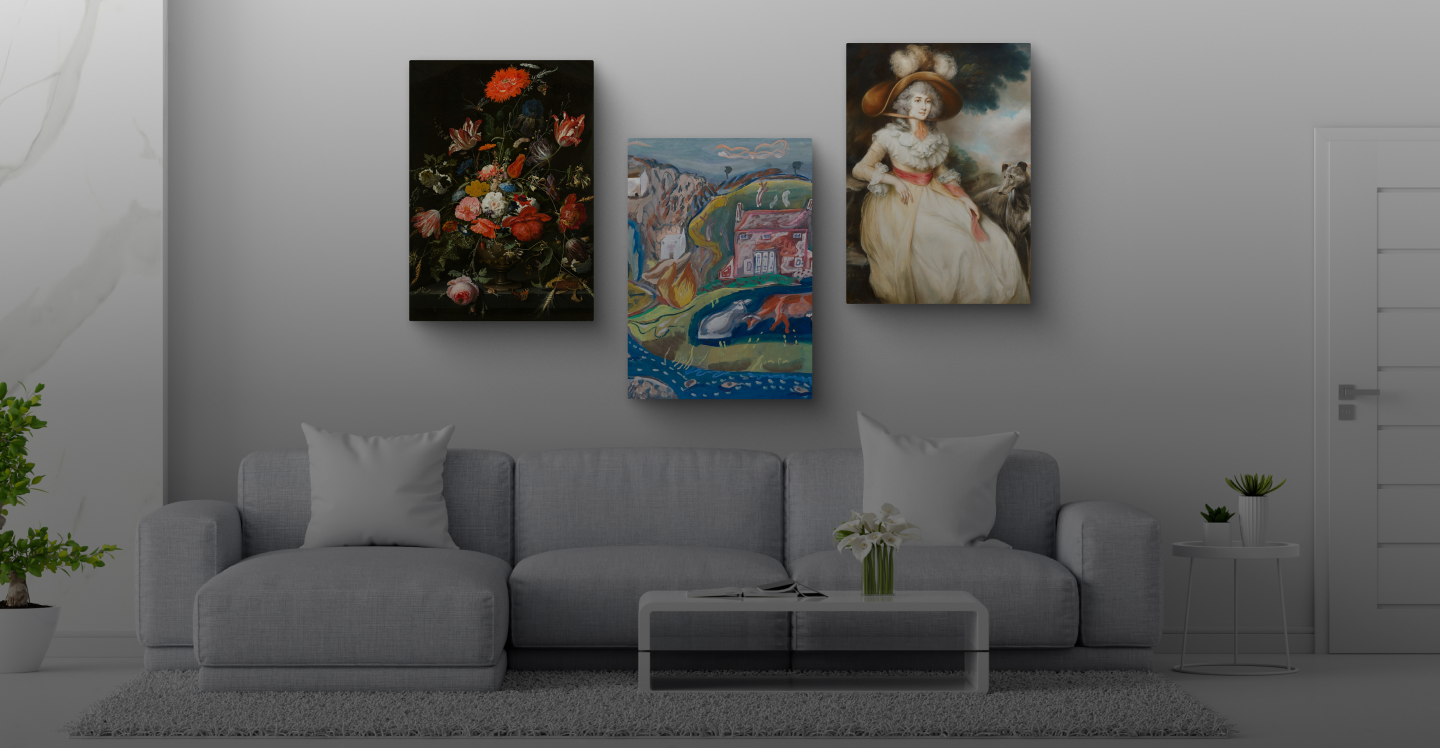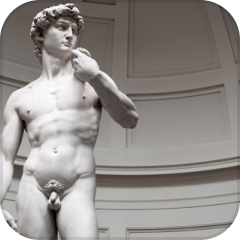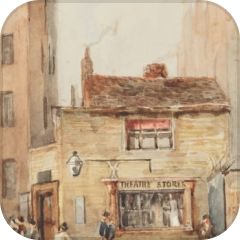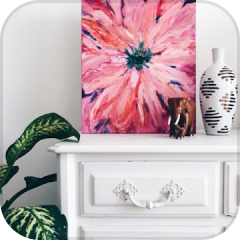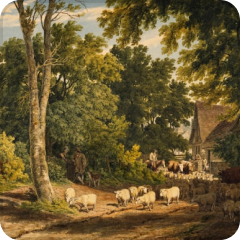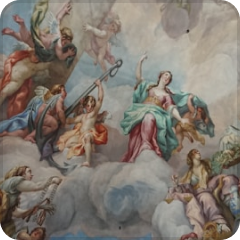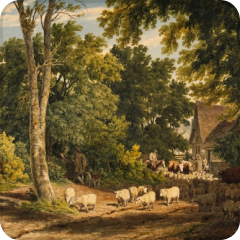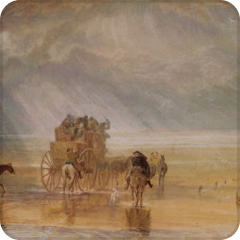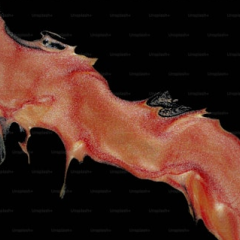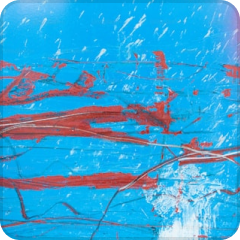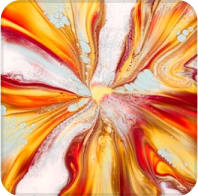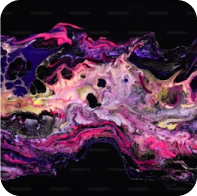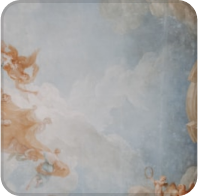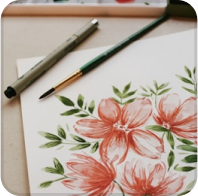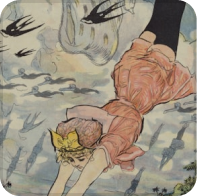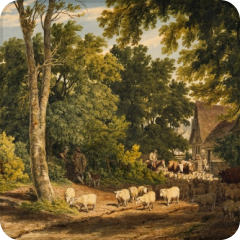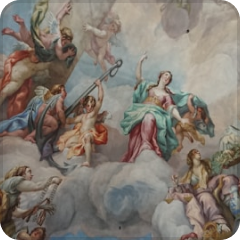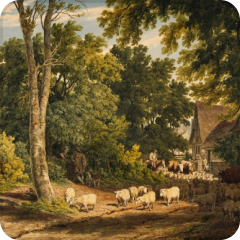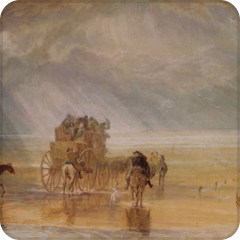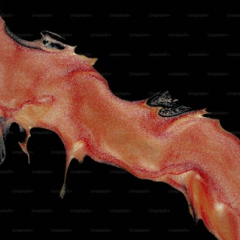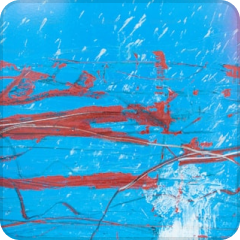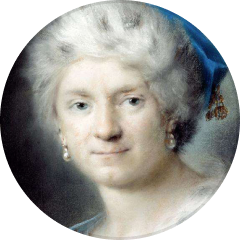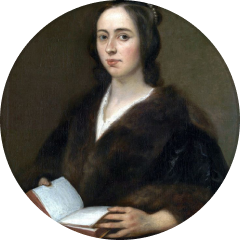





Top Categories
Transform Your Space with Personalized Art Prints
Bring your walls to life with premium, customizable canvas prints. Whether it’s your favorite memories or inspiring art, Zebaco makes it easy to create beautiful, durable pieces that reflect your style.

High-Quality Prints

Affordable Custom Art

100% Satisfaction
What’s On Sale
What Our Customers are Saying


Oliver Stone
"I recently purchased a stunning canvas from Zebaco, and I couldn't be happier with my choice! The vibrant colors and exquisite detail have truly transformed my living room. “


Amelia Rivers
"I recently purchased a stunning canvas from Zebaco, and I couldn't be happier with my choice! The vibrant colors and exquisite detail have truly transformed my living room. “


Ethan Hawke
"I recently purchased a stunning canvas from Zebaco, and I couldn't be happier with my choice! The vibrant colors and exquisite detail have truly transformed my living room. “


Sophia Bennett
"I recently purchased a stunning canvas from Zebaco, and I couldn't be happier with my choice! The vibrant colors and exquisite detail have truly transformed my living room. “


Sophia Bennett
"I recently purchased a stunning canvas from Zebaco, and I couldn't be happier with my choice! The vibrant colors and exquisite detail have truly transformed my living room. “
Canvas Art Prints: Complete Guide to Transforming Your Living Space
Canvas art reproduction represents a revolutionary approach to bringing museum-quality artwork into residential and commercial spaces. This sophisticated medium combines centuries-old artistic traditions with contemporary printing innovations to create durable, visually stunning pieces that capture the essence of original masterworks while remaining accessible to diverse audiences.
The foundation of canvas art reproduction lies in the careful selection of base materials. Premium reproductions utilize canvas fabrics woven from natural fibers, primarily cotton or linen, which provide the ideal surface texture for receiving specialized inks. These fabrics undergo rigorous preparation processes, including priming and coating treatments that ensure optimal ink adhesion and color vibrancy. The weave density of the canvas directly impacts the final image quality, with tighter weaves producing smoother gradations and finer details, while looser weaves contribute to a more pronounced artistic texture reminiscent of traditional oil paintings.
Modern reproduction techniques employ sophisticated color management systems that analyze original artworks through high-resolution scanning or professional photography. These digital captures preserve every nuance of the original piece, from subtle color variations to surface textures and brushstroke patterns. The resulting digital files serve as the blueprint for creating faithful reproductions that maintain the artistic integrity of the source material.
The printing process itself involves precision machinery capable of depositing ink droplets as small as 1.5 picoliters onto the canvas surface. This microscopic precision enables the recreation of fine details that would be impossible with traditional printing methods. The printers utilize multiple ink cartridges, often employing 10 to 12 different colors, to achieve a color gamut that closely matches the original artwork's tonal range and chromatic depth.
Quality control measures throughout the reproduction process ensure consistency and excellence in every piece. Each print undergoes color verification against standardized reference materials, and surface inspections identify any imperfections that might compromise the final product. This meticulous attention to detail guarantees that every canvas art reproduction meets professional gallery standards.
Historical Evolution of Canvas Printing Methods
The journey from traditional canvas paintings to modern reproductions represents centuries of artistic and technological evolution. Understanding this progression provides valuable context for appreciating contemporary canvas art reproduction capabilities and their place in the broader art world.
Canvas painting techniques originated in 14th-century Europe, where artists began transitioning from wooden panels to fabric supports. Early canvas materials consisted of hemp or linen, prized for their durability and ability to accept various painting mediums. Artists discovered that canvas offered superior portability compared to heavy wooden panels, enabling larger compositions and easier transportation between locations.
The industrial revolution brought significant changes to canvas production methods. Mechanized weaving processes standardized canvas quality and reduced production costs, making artistic materials more accessible to broader populations. Simultaneously, developments in pigment chemistry expanded the available color palette, allowing artists to achieve previously impossible hues and color combinations.
The 20th century witnessed the emergence of photographic reproduction techniques that attempted to capture artwork for mass distribution. Early photolithography and offset printing methods provided limited color accuracy and durability, often resulting in reproductions that bore little resemblance to their source materials. However, these early attempts laid the groundwork for future innovations in reproduction technology.
Digital printing revolution began in the 1980s with the introduction of computer-controlled inkjet printers. Initial systems produced modest quality reproductions suitable for basic applications but lacked the resolution and color accuracy necessary for fine art reproduction. Continuous improvements in print head design, ink formulations, and color management systems gradually elevated digital printing capabilities.
The 1990s marked a turning point with the development of giclée printing technology. Originally created for fine art reproduction, giclée printers utilized specialized inks and papers to achieve unprecedented color accuracy and detail reproduction. When applied to canvas substrates, this technology enabled the creation of reproductions that closely approximated the visual qualities of original paintings.
Contemporary canvas reproduction techniques represent the culmination of centuries of artistic tradition and decades of technological refinement. Modern systems achieve color accuracies exceeding 95% when compared to original artworks, while archival inks ensure longevity that rivals traditional painting materials. This convergence of art and science has democratized access to masterworks previously available only in museums and private collections.
Comprehensive Material Science Behind Canvas Construction
The science underlying canvas construction involves complex interactions between fiber properties, weave patterns, surface treatments, and ink receptivity. Understanding these factors provides insight into why certain canvas types excel for specific artistic applications and how material choices impact the final reproduction quality.
Fiber composition forms the foundation of canvas quality and performance. Cotton fibers, derived from cotton plant seed pods, offer excellent ink absorption properties and natural texture variation. The cellulose structure of cotton fibers creates microscopic pores that capture and hold ink particles, preventing bleeding while maintaining color saturation. Premium cotton canvas utilizes long-staple fibers that provide greater strength and durability compared to short-staple alternatives.
Linen canvas, woven from flax plant fibers, represents the traditional choice for fine art applications. Linen's superior strength and stability make it ideal for large-format reproductions that must maintain dimensional stability over extended periods. The natural irregularities in linen fibers create subtle texture variations that enhance the tactile quality of reproductions, contributing to their authentic artistic appearance.
Synthetic canvas materials, primarily polyester-based, offer distinct advantages in specific applications. Polyester fibers provide exceptional dimensional stability, resistance to humidity fluctuations, and consistent texture characteristics. These properties make synthetic canvas particularly suitable for environments with challenging climate conditions or applications requiring precise dimensional tolerances.
Canvas weave patterns significantly influence both aesthetic appearance and functional performance. Plain weave patterns, featuring alternating over-under fiber intersections, create uniform surfaces ideal for detailed reproductions. Twill weave patterns, with their diagonal fiber arrangements, produce more pronounced textures that complement impressionistic or abstract artwork styles.
Surface preparation processes transform raw canvas into print-ready substrates. Sizing treatments seal the fabric fibers, preventing ink penetration that could cause bleeding or color shifts. Primer coatings provide uniform ink receptivity across the entire surface while maintaining the canvas's natural texture characteristics. These preparation steps require precise chemical formulations balanced to achieve optimal ink adhesion without compromising canvas flexibility.
The molecular interactions between canvas fibers and specialized inks determine color reproduction accuracy and longevity. Pigment-based inks form chemical bonds with canvas fibers, creating permanent color deposits that resist fading and environmental degradation. These molecular bonds explain why quality canvas reproductions maintain their appearance for decades while inferior materials deteriorate rapidly.
Advanced Printing Methodologies and Quality Control
Contemporary canvas printing employs sophisticated methodologies that combine precision engineering with artistic sensibility. These processes ensure that every reproduction meets exacting standards for color accuracy, detail reproduction, and long-term stability.
Color management systems form the technological backbone of professional canvas printing operations. These systems calibrate every component in the reproduction workflow, from initial scanning to final printing, ensuring color consistency throughout the process. ICC color profiles define how colors should appear on specific canvas and ink combinations, while spectrophotometers verify that printed colors match predetermined standards within acceptable tolerances.
Print resolution capabilities have evolved dramatically with advances in print head technology. Modern canvas printers achieve resolutions exceeding 2400 dots per inch, enabling the reproduction of minute details invisible to casual observation. This resolution capability proves particularly crucial when reproducing artwork with fine textures, subtle gradations, or intricate patterns that demand precise detail retention.
Ink delivery systems utilize piezoelectric print heads that precisely control droplet size and placement. Variable droplet technology allows printers to deposit different ink volumes for specific tonal requirements—smaller droplets for fine details and larger droplets for solid color areas. This precision enables smooth color transitions and prevents the banding artifacts that compromise reproduction quality.
Multi-pass printing techniques further enhance reproduction quality by building colors through multiple ink applications. Rather than depositing all ink in a single pass, multi-pass printing gradually builds color density while allowing optimal ink penetration and drying between passes. This methodology prevents ink bleeding and ensures uniform color distribution across the entire canvas surface.
Quality assurance protocols verify reproduction accuracy through multiple verification stages. Densitometry measurements confirm ink deposition levels, while colorimetry assessments validate color accuracy against reference standards. Surface inspections identify any physical defects that might affect visual quality, ensuring that every reproduction meets professional standards before reaching customers.
Environmental controls within printing facilities maintain optimal conditions for consistent results. Temperature and humidity regulation prevents canvas dimensional changes during printing, while particulate filtration systems eliminate dust and debris that could contaminate the reproduction process. These controlled environments ensure that external factors do not compromise reproduction quality.
Sophisticated Color Theory and Reproduction Science
Understanding color reproduction science reveals why canvas art reproductions can achieve such remarkable fidelity to original artworks. This complex field combines optical physics, chemistry, and perceptual psychology to create visual experiences that closely match original artistic intentions.
Light interaction with canvas surfaces creates the visual phenomena we perceive as color and texture. When light strikes a canvas reproduction, several optical processes occur simultaneously. Specular reflection from the canvas surface creates highlights and contributes to the three-dimensional appearance of the piece. Diffuse reflection from within the canvas fibers produces the base color perception, while subsurface scattering creates the subtle color mixing that gives canvas reproductions their distinctive depth.
Color gamut considerations determine how accurately a reproduction can match original artwork colors. The human eye can perceive approximately 10 million distinct colors, while traditional printing processes reproduce only a fraction of this range. Advanced canvas printing systems utilize expanded color gamuts through additional ink colors beyond standard cyan, magenta, yellow, and black. Light magenta, light cyan, gray, and specialized colors extend the reproducible color range, enabling more accurate rendition of subtle color variations found in original artwork.
Metamerism phenomena affect how colors appear under different lighting conditions. Colors that appear identical under one light source may appear different under another due to variations in their spectral composition. Professional canvas reproduction addresses metamerism through careful ink selection and color profiling under multiple light sources, ensuring that reproductions maintain color consistency across various viewing environments.
Color permanence research demonstrates why pigment-based inks excel for canvas reproduction. Unlike dye-based inks that fade through molecular breakdown, pigment inks maintain color stability through physical particle deposition within canvas fibers. These particles resist UV radiation and atmospheric pollutants that typically cause color degradation over time.
Perceptual color science influences reproduction strategies by accounting for how humans perceive and process visual information. The human visual system processes colors relative to their surroundings, meaning that color perception depends heavily on adjacent colors and overall composition context. Professional color management systems incorporate these perceptual factors when creating reproduction profiles, ensuring that the overall visual impact matches the original artwork rather than simply matching individual color measurements.
Dynamic range considerations address the luminosity variations within artwork reproductions. Original paintings often feature extremely subtle tonal gradations that challenge reproduction capabilities. Advanced printing systems utilize multiple ink densities and sophisticated dithering algorithms to recreate these subtle variations, preserving the tonal richness that contributes to artistic impact.
Professional Mounting and Presentation Methods
The mounting and presentation of canvas art reproductions significantly influence their visual impact and longevity. Professional mounting techniques ensure that reproductions maintain their appearance while providing the structural support necessary for long-term display.
Stretcher bar construction forms the invisible foundation supporting canvas reproductions. Quality stretcher bars utilize kiln-dried hardwood, typically pine or poplar, that resists warping and dimensional changes over time. The wood selection process prioritizes stability and strength, as inferior materials can cause canvas distortion that compromises the reproduction's appearance.
Corner joinery methods determine the structural integrity of the stretcher frame. Traditional mortise and tenon joints provide superior strength compared to simple butt joints, preventing frame separation that could cause canvas sagging. Modern alternatives include reinforced corner brackets and precision-machined joints that combine strength with ease of assembly.
Canvas stretching techniques require precise tension distribution to achieve uniform surface tautness without overstressing the fabric. Professional stretching begins at the center points of each side, working outward in a systematic pattern that distributes tension evenly. Proper tension prevents wrinkles and sagging while avoiding excessive stress that could damage the canvas or printed image.
Gallery wrapping methods extend the printed image around the stretcher frame edges, creating a seamless appearance that eliminates the need for traditional framing. This technique requires careful image planning to ensure that important compositional elements remain visible on the front surface while extending complementary imagery around the sides. Professional gallery wrapping maintains consistent image quality across all surfaces, creating a unified artistic presentation.
Alternative mounting approaches accommodate different aesthetic preferences and display requirements. Museum mounting preserves the original image boundaries by wrapping the canvas with neutral-colored borders, suitable for reproductions of works originally designed for framing. Float mounting creates a shadow box effect by positioning the canvas reproduction away from the wall surface, adding dimensional interest while protecting the artwork from wall contact.
Hanging hardware selection ensures secure display while accommodating various wall types and weights. D-ring hangers provide reliable support for lightweight to medium reproductions, while French cleat systems offer superior strength for larger pieces. Proper hardware installation distributes the artwork's weight across multiple points, preventing stress concentration that could damage either the canvas or the wall surface.
Interior Design Harmony and Spatial Considerations
Canvas art reproductions serve as powerful design elements that can transform spaces through strategic placement and thoughtful selection. Understanding how these pieces interact with interior design principles enables optimal artistic integration that enhances rather than overwhelms existing décor.
Scale relationships between canvas reproductions and their surrounding spaces determine visual balance and impact. Large reproductions command attention and can serve as room focal points, while smaller pieces contribute to layered compositions that build visual interest through multiple elements. The mathematical relationship between artwork dimensions and wall space follows design principles suggesting that artwork should occupy approximately 60-75% of available wall width for optimal visual proportion.
Color harmony principles guide the selection of canvas reproductions that complement existing interior palettes. Analogous color schemes create peaceful, cohesive environments by utilizing colors adjacent on the color wheel, while complementary schemes generate dynamic tension through opposing colors. Monochromatic approaches use varying tones of single colors to create sophisticated, unified spaces that emphasize texture and form over chromatic variety.
Lighting considerations profoundly affect how canvas reproductions appear within interior spaces. Natural light varies throughout the day and seasons, causing colors to shift and change in ways that can either enhance or detract from the reproduction's impact. Artificial lighting systems offer greater control over appearance, with LED systems providing consistent color temperature and minimal heat generation that preserves reproduction integrity.
Texture coordination between canvas reproductions and surrounding materials creates cohesive design narratives. Smooth, contemporary surfaces benefit from the organic texture that canvas reproductions provide, while traditional interiors with existing textural elements require careful balance to avoid visual competition. The interplay between canvas texture and other surface materials contributes to the overall tactile richness of interior spaces.
Compositional flow throughout spaces utilizes canvas reproductions as waypoints that guide visual movement and create narrative connections between different areas. Sequential placement of related reproductions can lead viewers through spaces while maintaining thematic continuity. This approach proves particularly effective in open floor plans where canvas pieces help define distinct functional zones while maintaining overall design coherence.
Architectural integration considers how canvas reproductions interact with structural elements like columns, alcoves, and built-in features. Strategic placement can emphasize architectural details or camouflage less attractive elements, while careful sizing prevents reproductions from competing with architectural features for visual attention.
Psychological Impact and Emotional Resonance
The psychological effects of canvas art reproductions extend beyond mere decoration to influence mood, behavior, and overall wellbeing within interior spaces. Research in environmental psychology demonstrates that visual art significantly impacts human emotional states and cognitive performance, making canvas selection an important consideration for creating supportive living and working environments.
Neurological responses to visual art activate multiple brain regions simultaneously, including areas responsible for emotional processing, memory formation, and reward recognition. Canvas reproductions that depict nature scenes trigger specific neural pathways associated with stress reduction and cognitive restoration. These biophilic responses explain why landscape and botanical reproductions consistently rank among the most popular choices for residential spaces.
Color psychology influences how different canvas reproductions affect occupant behavior and mood. Warm color palettes featuring reds, oranges, and yellows stimulate energy and social interaction, making them suitable for communal spaces like living rooms and dining areas. Cool colors including blues, greens, and purples promote tranquility and concentration, proving beneficial in bedrooms and study areas.
Pattern recognition processes in human visual perception respond differently to various artistic styles and compositions. Abstract reproductions with complex patterns can stimulate creative thinking and problem-solving abilities, while realistic imagery provides comfort through familiar subject recognition. Geometric patterns create sense of order and stability, particularly beneficial in work environments where focus and organization are priorities.
Memory association mechanisms connect visual art with personal experiences and cultural references. Canvas reproductions that resonate with individual memories or cultural backgrounds create stronger emotional connections and greater satisfaction with the living environment. This phenomenon explains why personalized canvas reproductions often generate more positive responses than generic decorative pieces.
Stress reduction benefits from appropriate canvas art placement have been documented in numerous psychological studies. Hospital environments utilizing nature-themed canvas reproductions show measurable improvements in patient recovery times and overall satisfaction scores. Similar benefits extend to residential applications, where carefully chosen artwork contributes to home environments that support relaxation and emotional wellbeing.
Social interaction patterns can be influenced by canvas art selection and placement. Conversation-starting pieces featuring intriguing subjects or unique artistic approaches encourage social engagement and discussion among visitors. This social catalyst effect makes canvas reproductions valuable tools for creating welcoming, engaging environments that facilitate human connection.
Global Cultural Influences on Canvas Art Preferences
Canvas art reproduction preferences vary significantly across different cultural contexts, reflecting diverse aesthetic traditions, historical influences, and contemporary design movements. Understanding these cultural variations provides insight into the universal and culture-specific aspects of artistic appreciation and their implications for canvas reproduction selection.
Eastern aesthetic traditions emphasize harmony, balance, and spiritual symbolism in artistic representation. Canvas reproductions featuring traditional Eastern subjects like cherry blossoms, bamboo forests, or minimalist landscapes resonate with audiences appreciating these cultural values. The concept of negative space, fundamental to Eastern design philosophy, influences how these reproductions interact with surrounding environments, often requiring more generous spacing and simplified presentations.
Western artistic traditions encompass diverse movements from classical realism to contemporary abstraction. European influences favor sophisticated color palettes and complex compositions that reflect centuries of artistic refinement. American preferences often emphasize bold statements and individual expression, leading to popularity of oversized reproductions and vibrant color schemes that make strong visual statements.
Mediterranean cultural influences manifest in canvas reproduction preferences for warm earth tones, architectural subjects, and outdoor scenes that celebrate natural beauty and relaxed lifestyle approaches. These preferences reflect cultural values that prioritize leisure, family gatherings, and connection with natural environments.
Scandinavian design principles have gained global popularity through their emphasis on simplicity, functionality, and connection with nature. Canvas reproductions reflecting these values feature minimal compositions, neutral color palettes, and subjects that celebrate natural beauty without overwhelming spaces with visual complexity.
Contemporary global design movements blend influences from multiple cultural traditions, creating eclectic approaches that combine elements from various sources. This cultural fusion appears in canvas reproduction preferences that mix Eastern and Western subjects, traditional and contemporary styles, and diverse color approaches within single collections or arrangements.
Regional climate influences also affect canvas reproduction preferences, with populations in sunny climates often preferring cooler color palettes that provide visual relief from intense sunlight, while those in cooler regions may gravitate toward warmer tones that compensate for limited natural light exposure.
Premium Quality Assessment Criteria
Evaluating canvas art reproduction quality requires understanding the specific characteristics that distinguish professional-grade pieces from mass-market alternatives. These assessment criteria enable informed purchasing decisions and ensure long-term satisfaction with canvas art investments.
Print resolution verification involves examining image sharpness and detail clarity at close viewing distances. Quality reproductions maintain crisp edges and fine details even when viewed from 12-18 inches away. Pixelation, graininess, or loss of detail at normal viewing distances indicates inferior reproduction quality that will become more apparent over time.
Color accuracy assessment compares reproduction colors with reference materials or original artwork when available. Professional reproductions demonstrate consistent color relationships throughout the piece, with no obvious color shifts or casts that alter the artistic intent. Color consistency across different lighting conditions indicates proper color management during the reproduction process.
Canvas texture evaluation examines how the fabric weave interacts with the printed image. Quality reproductions preserve canvas texture as an artistic element rather than allowing it to interfere with image clarity. The texture should enhance the overall artistic impression without creating distracting patterns or interference effects.
Ink quality indicators include color saturation, fade resistance, and absence of visible dot patterns or banding artifacts. Premium reproductions utilize pigment-based inks that maintain their vibrancy over extended periods, while inferior alternatives may show color shifts or fading within months of display.
Mounting quality assessment examines stretcher bar construction, corner joints, and canvas tension distribution. Professional mounting features sturdy, properly joined frames with evenly distributed canvas tension that prevents sagging or wrinkles. Poor mounting quality becomes apparent through visible frame separation, uneven tension, or canvas distortion.
Surface coating evaluation determines whether protective treatments have been properly applied. Quality reproductions feature uniform protective coatings that enhance color saturation while providing UV protection and moisture resistance. Uneven coatings or coating defects can create glossy spots or texture irregularities that detract from the reproduction's appearance.
Specialized Subject Matter Categories
Canvas art reproductions encompass an extraordinary range of subject matter categories, each presenting unique reproduction challenges and aesthetic considerations. Understanding these categories helps in selecting reproductions that align with personal preferences and interior design objectives.
Landscape reproductions capture the grandeur and serenity of natural environments, from sweeping vistas to intimate woodland scenes. These pieces often feature complex color gradations and atmospheric effects that challenge reproduction capabilities. Quality landscape reproductions preserve the subtle color transitions that create depth perception and atmospheric perspective, essential elements for conveying the emotional impact of natural scenery.
Portrait reproductions require exceptional attention to skin tone accuracy and facial detail preservation. Human visual perception is particularly sensitive to facial proportions and skin color variations, making portrait reproduction one of the most demanding applications for canvas printing technology. Professional portrait reproductions maintain the subtle color variations and textural details that convey personality and emotional expression.
Abstract artwork reproductions present unique challenges in balancing color relationships and compositional elements. Abstract pieces often rely on precise color interactions and surface textures to convey artistic meaning, requiring reproduction systems capable of maintaining these subtle relationships. The success of abstract reproductions depends on preserving the dynamic tension between colors and forms that creates visual energy.
Still life reproductions showcase the reproduction system's ability to render diverse textures and materials within single compositions. These pieces often combine smooth surfaces, rough textures, transparent elements, and complex lighting effects that test every aspect of the reproduction process. Quality still life reproductions maintain the illusion of three-dimensional form through accurate shadow rendering and surface texture representation.
Architectural reproductions capture the geometric precision and material textures of built environments. These pieces require exceptional detail reproduction to convey the structural relationships and surface materials that define architectural subjects. Professional architectural reproductions preserve the linear precision and tonal gradations essential for representing three-dimensional structures on two-dimensional surfaces.
Historical artwork reproductions bring masterpieces from past centuries into contemporary spaces. These pieces often feature aged patinas, cracked surfaces, and color shifts that developed over centuries of aging. Quality historical reproductions capture these aging characteristics while maintaining the artistic integrity that made the original works significant.
Customization Possibilities and Personalization Options
The realm of canvas art reproduction customization offers unprecedented opportunities for creating unique pieces that reflect individual tastes and specific spatial requirements. Modern reproduction technology enables modifications and personalizations that were impossible with traditional art reproduction methods.
Size customization extends far beyond standard frame dimensions to accommodate unique spatial requirements and design visions. Professional reproduction services can create canvas pieces ranging from intimate 4×6 inch studies to grand 60×120 inch statement pieces. Custom sizing enables perfect proportional relationships with existing furniture and architectural elements, creating harmonious compositions that enhance rather than overpower their surroundings.
Image modification capabilities allow subtle adjustments that improve reproduction suitability for specific environments. Color temperature adjustments can warm or cool overall color palettes to complement existing interior schemes. Contrast enhancements can improve image impact in spaces with challenging lighting conditions, while saturation adjustments can create more vibrant or subdued presentations depending on aesthetic preferences.
Cropping and composition alterations enable focus on specific elements within larger artworks. Detail extractions from complex compositions can create intimate pieces that highlight particular aspects of masterworks. Panoramic extensions can transform standard compositions into wide-format pieces suitable for linear wall spaces or contemporary architectural environments.
Multiple panel arrangements divide single images across several canvas pieces, creating dramatic installations that command attention while maintaining compositional unity. Diptych arrangements split images across two panels, while triptych presentations utilize three panels for more complex compositions. These multi-panel approaches work particularly well with landscape subjects and abstract compositions that benefit from expanded presentation formats.
Border and edge treatment options provide additional customization possibilities. Gallery wrapping extends images around frame edges for seamless presentations, while museum wrapping maintains original image boundaries with neutral borders. Mirror wrapping reflects edge pixels to create continuous imagery, and custom border colors can complement specific color schemes or architectural elements.
Texture enhancement processes can emphasize the canvas weave to create more pronounced artistic textures. Gel medium applications add dimensional texture that mimics brushstroke patterns, while specialized printing techniques can create raised surfaces that simulate impasto painting methods. These texture enhancements bridge the gap between reproductions and original artwork, creating more engaging tactile experiences.
Room-Specific Selection Strategies
Different interior spaces present unique challenges and opportunities for canvas art reproduction display. Understanding these room-specific considerations enables optimal selection and placement strategies that maximize artistic impact while respecting functional requirements.
Living room spaces typically serve as primary gathering areas where canvas reproductions can make bold artistic statements. Large-format pieces work well as focal points above seating areas, while smaller coordinated pieces can create gallery walls that encourage exploration and conversation. Color selection should complement existing furniture and architectural elements while providing sufficient contrast to maintain visual interest.
Bedroom environments benefit from canvas reproductions that promote relaxation and personal reflection. Calming subjects like serene landscapes, abstract compositions in cool colors, or meaningful personal imagery contribute to restful atmospheres. Size considerations should maintain proportion with bedroom furniture while avoiding pieces so large they overwhelm intimate spaces.
Kitchen areas present unique challenges due to humidity, temperature fluctuations, and potential exposure to cooking vapors. Canvas reproductions in kitchens should feature protective coatings and mounting systems that resist moisture and temperature changes. Subject matter often focuses on food themes, botanical subjects, or abstract pieces that complement culinary activities without overwhelming functional requirements.
Home office spaces utilize canvas reproductions to enhance productivity and creative thinking. Motivational imagery, geometric abstracts, or culturally significant pieces can inspire focus and creativity. Color selections should promote alertness without creating distraction, while sizes should complement work surfaces without overwhelming computer screens or other functional elements.
Bathroom environments require special consideration for humidity resistance and easy maintenance. Canvas reproductions in bathrooms should feature superior moisture protection and mounting systems that allow easy removal for cleaning. Subject matter typically favors abstract pieces or nature themes that complement bathing and relaxation activities.
Hallway and transitional spaces benefit from canvas reproductions that create visual flow between different areas. These spaces often accommodate multiple smaller pieces or linear arrangements that guide movement while maintaining thematic continuity with adjacent rooms. Lighting considerations become particularly important in hallways where natural light may be limited.
Professional Display Lighting Considerations
Proper lighting significantly impacts how canvas art reproductions appear and contribute to interior environments. Understanding lighting principles enables optimal presentation that enhances artistic qualities while protecting the reproduction from harmful light exposure.
Natural light considerations require careful evaluation of window orientation and seasonal variations. South-facing exposures provide consistent light throughout the day but may expose reproductions to excessive UV radiation that accelerates fading. East and west-facing windows create dramatic lighting changes throughout the day that can either enhance or detract from reproduction appearance depending on positioning and subject matter.
Artificial lighting systems offer greater control over reproduction presentation while protecting against UV damage. LED lighting systems provide excellent color rendering capabilities while generating minimal heat that could affect canvas stability. Adjustable track lighting enables precise illumination control that can emphasize texture and color variations within reproductions.
Picture lighting systems utilize dedicated fixtures that provide focused illumination specifically for artwork display. These systems typically mount above reproductions and direct light downward at optimal angles to enhance visual impact while minimizing glare and reflection. Battery-operated picture lights offer installation flexibility without requiring electrical modifications.
Color temperature selection affects how reproduction colors appear under artificial lighting. Warm light (2700-3000K) enhances earth tones and creates cozy atmospheres, while cool light (4000-5000K) improves color accuracy and provides more energetic environments. Neutral lighting (3000-3500K) offers balanced color rendering suitable for most reproduction subjects.
Light distribution patterns determine how evenly reproductions are illuminated and whether shadows or hotspots detract from visual quality. Professional lighting design ensures uniform illumination across the entire reproduction surface while avoiding excessive brightness that could cause eye strain or color washout.
UV filtration becomes essential for reproductions displayed in bright environments. Window films, specialized glass, and UV-filtering lighting fixtures can significantly reduce harmful radiation exposure that accelerates ink degradation. These protective measures extend reproduction lifespan while maintaining optimal viewing conditions.
Preservation and Conservation Practices
Long-term preservation of canvas art reproductions requires understanding the environmental factors that affect their condition and implementing appropriate conservation practices. These measures ensure that reproductions maintain their visual impact and structural integrity for decades of enjoyment.
Environmental control systems manage the climate conditions that most significantly affect canvas reproduction longevity. Temperature stability prevents expansion and contraction cycles that stress canvas fibers and mounting systems. Relative humidity control maintains optimal moisture levels that prevent canvas sagging or excessive tightening that could damage printed surfaces.
Air quality management protects reproductions from atmospheric pollutants that can cause gradual deterioration. Particulate filtration systems remove dust and debris that accumulate on surfaces and potentially abrade printed images. Chemical filtration addresses gaseous pollutants that may interact with inks or canvas materials, causing color shifts or degradation over time.
UV radiation protection forms a critical component of reproduction preservation strategies. Window treatments, UV-filtering glazing, and specialized display lighting minimize harmful radiation exposure while maintaining appropriate illumination levels. These protective measures significantly extend reproduction lifespan without compromising visual accessibility.
Handling protocols ensure that human contact does not damage reproductions during cleaning, moving, or maintenance activities. Proper handling techniques avoid touching printed surfaces, utilize clean tools for dust removal, and employ appropriate lifting methods that distribute weight evenly. These protocols prevent accumulation of oils, dirt, and other contaminants that could permanently stain or damage reproductions.
Cleaning methodologies address routine maintenance requirements while avoiding damage to delicate printed surfaces. Gentle dusting with appropriate tools removes accumulated particles without abrading the canvas surface. Spot cleaning procedures address specific contamination while preserving surrounding areas, and periodic professional cleaning services can address more complex maintenance requirements.
Storage considerations apply when reproductions require temporary removal from display. Proper storage protects reproductions from physical damage, environmental extremes, and pest intrusion while maintaining their condition for future display. Storage environments should maintain stable conditions and provide physical protection against folding, crushing, or surface contact that could cause permanent damage.
Innovative Production Processes and Manufacturing Excellence
Modern canvas reproduction manufacturing combines artisanal craftsmanship with precision engineering to create pieces that honor artistic traditions while leveraging contemporary technological capabilities. These production processes ensure consistency, quality, and artistic integrity across diverse reproduction projects.
Pre-production planning involves comprehensive analysis of source materials to determine optimal reproduction strategies. High-resolution scanning captures every detail of original artworks, creating digital archives that preserve artistic information with exceptional fidelity. Color analysis identifies the specific pigments and techniques used in original pieces, informing ink selection and printing parameter optimization.
Workflow management systems coordinate complex production sequences that transform digital files into finished canvas reproductions. These systems track each reproduction through multiple production stages, ensuring quality standards are maintained while optimizing efficiency. Digital asset management preserves source files and production specifications, enabling consistent reproduction quality across multiple orders or future reprints.
Print production monitoring utilizes advanced sensors and control systems that continuously verify reproduction quality during printing operations. Real-time color monitoring ensures consistent ink deposition, while surface inspection systems identify potential defects before they affect finished pieces. These monitoring systems enable immediate corrections that maintain quality standards throughout production runs.
Post-printing processes add protective treatments and prepare reproductions for mounting and display. UV-resistant coatings enhance longevity while maintaining appropriate surface characteristics. Trimming and edge preparation ensure precise dimensions and clean presentations that meet professional mounting requirements.
Quality verification protocols examine every aspect of finished reproductions before packaging and shipping. Color accuracy assessments verify adherence to approved standards, while physical inspections identify any defects that could affect appearance or durability. These comprehensive verification processes ensure that customers receive reproductions that meet or exceed their expectations.
Packaging and shipping considerations protect reproductions during transportation while maintaining their pristine condition. Specialized packaging materials cushion against impacts while preventing moisture exposure and surface contact that could damage printed surfaces. Shipping protocols optimize delivery times while ensuring safe arrival at destination locations.
Specialized Mounting and Framing Alternatives
Beyond traditional stretched canvas presentations, contemporary mounting and framing alternatives offer diverse aesthetic possibilities that can enhance reproduction impact while addressing specific spatial and design requirements.
Float mounting systems create dramatic shadow effects by positioning canvas reproductions away from wall surfaces. These mounting approaches utilize hidden brackets or standoff hardware that supports the reproduction while maintaining visual separation from the wall. Float mounting proves particularly effective for abstract pieces and contemporary subjects that benefit from dimensional presentation.
Acrylic mounting systems encapsulate canvas reproductions between acrylic panels that provide protection while enhancing color saturation through optical properties. These mounting approaches create sleek, contemporary presentations suitable for modern interiors while offering superior protection against environmental factors and physical contact.
Metal mounting systems utilize aluminum or steel substrates that provide exceptional durability and dimensional stability. Canvas reproductions mounted on metal substrates resist warping and maintain perfect flatness even in challenging environmental conditions. These mounting approaches work particularly well for commercial applications and spaces with high humidity or temperature fluctuations.
Layered mounting presentations combine multiple reproduction elements to create complex, multi-dimensional displays. These approaches might feature background reproductions with foreground elements or multiple overlapping pieces that create depth and visual complexity. Layered mounting enables creation of unique artistic installations that would be impossible with single-piece presentations.
Modular mounting systems enable easy reconfiguration and updating of reproduction displays. These systems utilize standardized mounting hardware that allows reproductions to be moved, rotated, or replaced without wall modifications. Modular approaches prove particularly valuable in spaces that undergo frequent layout changes or where artwork rotation is desired.
Integrated mounting solutions incorporate reproduction display with functional elements like lighting, shelving, or storage systems. These comprehensive approaches maximize space utility while creating cohesive design statements that serve multiple purposes simultaneously.
Geographic and Cultural Aesthetic Variations
Canvas art reproduction preferences exhibit fascinating variations across different geographic regions and cultural contexts, reflecting deep-seated aesthetic traditions and contemporary lifestyle influences. Understanding these variations provides valuable insight into the universal and culture-specific aspects of artistic appreciation.
Nordic aesthetic influences emphasize natural subjects, minimal compositions, and neutral color palettes that reflect cultural values prioritizing simplicity and connection with natural environments. Canvas reproductions popular in Nordic contexts often feature winter landscapes, abstract compositions inspired by natural phenomena, and subjects that celebrate seasonal changes and natural beauty.
Mediterranean cultural preferences gravitate toward warm color palettes, architectural subjects, and outdoor scenes that reflect lifestyle values emphasizing leisure, family connections, and celebration of natural beauty. These preferences manifest in reproduction selections featuring coastal scenes, architectural details, and vibrant compositions that capture the energy and warmth of Mediterranean cultures.
Asian aesthetic traditions influence reproduction preferences toward subjects and compositions that emphasize balance, harmony, and spiritual symbolism. Cherry blossom scenes, bamboo forests, minimalist landscapes, and calligraphic elements reflect cultural values that prioritize meditation, natural cycles, and philosophical contemplation.
African cultural influences appear in reproduction preferences for vibrant colors, geometric patterns, and subjects that celebrate community, nature, and cultural heritage. These preferences often favor bold compositions, earth tone palettes, and imagery that connects with ancestral traditions and contemporary cultural expressions.
Latin American aesthetic preferences emphasize colorful, energetic compositions that reflect cultural values celebrating life, family, and artistic expression. Canvas reproductions popular in these contexts often feature festival scenes, tropical landscapes, abstract compositions with vibrant color combinations, and subjects that capture the dynamic energy of Latin American cultures.
Contemporary global influences create hybrid aesthetic preferences that blend elements from multiple cultural traditions, reflecting increasingly connected world communities and diverse lifestyle influences. These global preferences often feature eclectic mixing of styles, subjects, and color approaches that celebrate cultural diversity while creating personalized aesthetic expressions.
Canvas Art Psychology and Behavioral Influences
The psychological impact of canvas art reproductions extends far beyond simple decoration to influence behavior, mood, and cognitive performance in measurable ways. Understanding these psychological effects enables informed selection that supports specific lifestyle objectives and environmental goals.
Cognitive performance research demonstrates that appropriate artwork selection can enhance mental function and productivity in work environments. Abstract reproductions with complex patterns stimulate creative thinking processes, while nature scenes promote mental restoration and stress reduction. Geometric compositions can enhance focus and analytical thinking, making them suitable for spaces requiring sustained concentration.
Emotional regulation benefits from canvas reproductions that provide visual anchors for mood management and stress reduction. Calming imagery featuring water scenes, peaceful landscapes, or gentle abstract compositions can help regulate emotional responses during stressful periods. These psychological tools prove particularly valuable in bedroom and relaxation spaces where emotional equilibrium is important.
Social interaction facilitation occurs when canvas reproductions serve as conversation starters and shared interest focal points. Intriguing subjects, culturally significant imagery, or personally meaningful reproductions encourage social engagement and provide foundation for meaningful discussions among visitors and occupants.
Memory association mechanisms connect visual artwork with personal experiences, cultural background, and emotional memories. Canvas reproductions that resonate with individual histories create stronger psychological connections and greater satisfaction with living environments. These personal connections explain why customized reproductions often generate more positive responses than generic decorative pieces.
Circadian rhythm support can be enhanced through reproduction selection that complements natural daily cycles. Energizing imagery in morning-exposure areas can support alertness and activity, while calming subjects in evening spaces promote relaxation and sleep preparation. Understanding these connections enables artwork selection that supports healthy daily rhythms.
Stress reduction mechanisms operate through multiple pathways when appropriate canvas reproductions are displayed in living and working environments. Visual complexity reduction through simple, harmonious compositions can lower cognitive load and promote mental calm. Natural imagery triggers biophilic responses that connect occupants with restorative natural environments even within urban settings.
Professional Installation and Mounting Procedures
Proper installation ensures that canvas art reproductions achieve their maximum visual impact while maintaining structural integrity and safety. Professional installation procedures account for wall types, environmental factors, and long-term stability requirements.
Wall assessment procedures evaluate structural capabilities and surface conditions that affect mounting hardware selection and installation approaches. Drywall installations require appropriate anchors and weight distribution systems, while masonry walls offer superior support but demand specialized fasteners and installation tools.
Hardware selection depends on reproduction weight, wall type, and desired hanging method. Traditional wire hanging systems work well for lighter reproductions but may create tilting or shifting issues with larger pieces. French cleat systems provide superior stability and easy removal capabilities, particularly valuable for pieces requiring periodic maintenance or repositioning.
Level and alignment verification ensures proper visual presentation that enhances rather than detracts from reproduction impact. Professional installation utilizes precision measuring tools and alignment systems that achieve perfect positioning relative to furniture, architectural elements, and adjacent artwork. These details significantly affect overall visual harmony and professional appearance.
Safety considerations address both immediate installation requirements and long-term display stability. Proper weight distribution prevents wall damage while ensuring secure mounting that protects both the reproduction and surrounding areas. Safety margins account for potential environmental changes and aging that might affect mounting system performance over time.
Multiple piece coordination becomes complex when installing gallery walls or multi-panel reproductions that require precise spacing and alignment. Professional installation approaches utilize templates and measuring systems that ensure consistent spacing and perfect alignment across multiple pieces. These coordination efforts create cohesive presentations that maximize visual impact while maintaining professional appearance standards.
Emerging Technologies and Future Directions
The canvas art reproduction industry continues evolving through technological innovations that enhance quality, expand capabilities, and create new possibilities for artistic expression and personalization.
Augmented reality preview systems enable customers to visualize how specific reproductions will appear in their actual spaces before making purchase decisions. These systems utilize smartphone cameras and specialized software to superimpose reproduction images onto wall surfaces, providing accurate size and placement previews that reduce uncertainty and increase satisfaction with final selections.
Artificial intelligence color matching systems analyze existing interior elements and recommend reproduction options that complement established color schemes and design aesthetics. These systems consider lighting conditions, furniture colors, and architectural elements to suggest reproductions that will integrate harmoniously with existing environments.
Smart canvas technologies incorporate electronic elements that enable dynamic display capabilities. These advanced systems can adjust brightness, contrast, or even display different images based on time of day, seasonal changes, or personal preferences. While still emerging, these technologies represent potential future directions for canvas reproduction development.
3D printing applications enable creation of textured surfaces that closely mimic original painting techniques like impasto and palette knife applications. These additive manufacturing processes can reproduce the three-dimensional characteristics of original brushwork, creating reproductions with unprecedented tactile authenticity.
Sustainable production innovations address growing environmental consciousness among consumers and manufacturers. Bio-based inks derived from renewable sources offer alternatives to traditional petroleum-based formulations, while recycled canvas materials reduce environmental impact without compromising reproduction quality.
Color gamut expansion through new ink formulations and printing technologies continues pushing the boundaries of color reproduction accuracy. Specialized inks incorporating fluorescent or metallic particles enable reproduction of colors and effects previously impossible with traditional printing methods.
Specialized Care and Maintenance Protocols
Maintaining canvas art reproductions in optimal condition requires understanding specific care requirements that differ from other artwork formats. These maintenance protocols ensure long-term preservation while maintaining visual appeal and structural integrity.
Daily maintenance involves simple procedures that prevent accumulation of dust and environmental contaminants. Gentle air circulation around reproductions helps prevent moisture accumulation while avoiding direct airflow that could deposit particles on surfaces. Visual inspections identify early signs of deterioration or damage that might require professional attention.
Weekly cleaning protocols utilize appropriate tools and techniques that remove accumulated dust without damaging printed surfaces. Soft-bristled brushes or microfiber cloths work effectively for routine dust removal, while vacuum cleaners with brush attachments can address more substantial accumulation. These cleaning activities should always proceed from top to bottom to prevent redeposition of removed particles.
Monthly assessment procedures evaluate reproduction condition and identify any changes that might indicate environmental problems or maintenance needs. Color monitoring detects early signs of fading that might require improved UV protection, while surface inspections identify wear patterns or damage that could worsen without intervention.
Seasonal maintenance activities address environmental changes that affect reproduction condition and display requirements. Humidity monitoring becomes particularly important during seasonal transitions when atmospheric conditions fluctuate significantly. Climate control adjustments may be necessary to maintain optimal conditions for reproduction preservation.
Annual professional evaluation provides comprehensive assessment of reproduction condition and maintenance requirements. Professional conservators can identify subtle deterioration signs that untrained observers might miss, while providing recommendations for preservation improvements or restoration needs. These professional assessments prove particularly valuable for high-value reproductions or pieces with sentimental significance.
Emergency response procedures address unexpected damage or environmental events that threaten reproduction condition. Water damage protocols, fire damage assessment, and accident response procedures can minimize deterioration and preserve reproduction value even after adverse events. Having established emergency procedures enables quick response that often determines whether reproductions can be successfully preserved or restored.
Color Science and Visual Perception Principles
Understanding how human visual perception processes color and texture information explains why canvas art reproductions can create such powerful aesthetic and emotional responses. This scientific foundation informs both reproduction production and selection strategies.
Color constancy mechanisms in human vision enable consistent color perception despite changing lighting conditions. Canvas reproductions benefit from these perceptual adaptations that maintain color relationships even when ambient lighting varies throughout the day. Understanding color constancy helps explain why reproductions can maintain their visual impact across diverse lighting environments.
Texture perception involves multiple sensory systems that process visual and tactile information simultaneously. Canvas surface texture creates visual patterns that the brain interprets as three-dimensional characteristics, contributing to the perception of depth and authenticity that distinguishes canvas reproductions from flat paper prints.
Contrast sensitivity variations across the visual field influence how reproductions should be positioned for optimal impact. The human visual system processes fine details most effectively in central vision areas, while peripheral vision responds more strongly to movement and overall composition patterns. Understanding these perceptual characteristics informs reproduction sizing and placement strategies.
Color memory limitations affect how accurately humans can compare reproduction colors with remembered originals. These limitations explain why side-by-side comparisons prove more reliable than memory-based assessments, and why color matching systems utilize standardized reference materials rather than subjective evaluations.
Pattern recognition processes identify familiar shapes, subjects, and compositional arrangements within reproductions. These recognition mechanisms contribute to immediate emotional responses and aesthetic preferences that operate below conscious awareness levels. Understanding pattern recognition helps explain why certain reproduction subjects and styles achieve broader popular appeal.
Visual adaptation phenomena cause perceptual changes when viewing reproductions for extended periods. Initial strong responses may diminish over time as visual systems adapt to constant stimuli, explaining why reproduction rotation or repositioning can refresh their psychological impact and maintain long-term satisfaction.
Market Segmentation and Consumer Demographics
The canvas art reproduction market serves diverse consumer segments with varying preferences, budgets, and aesthetic requirements. Understanding these market segments enables better matching of reproduction characteristics with consumer needs and expectations.
Residential consumers represent the largest market segment, encompassing homeowners and renters seeking to personalize their living spaces with meaningful artwork. This segment spans broad demographic ranges with varying aesthetic preferences, budget constraints, and space requirements. Residential consumers often prioritize emotional connection and personal meaning over purely aesthetic considerations.
Commercial markets include businesses, offices, healthcare facilities, and hospitality venues requiring artwork that enhances environments while meeting specific functional requirements. Commercial applications often emphasize durability, easy maintenance, and broad aesthetic appeal that accommodates diverse viewer preferences. These markets frequently purchase reproductions in coordinated series that create cohesive visual themes throughout facilities.
Gift market segments seek reproductions suitable for presenting to others, requiring broad appeal and universal aesthetic qualities. Gift purchases often emphasize packaging presentation and perceived value rather than personal aesthetic preferences. Understanding gift market dynamics helps identify reproduction characteristics that translate well across diverse recipient preferences.
Collector segments pursue reproductions of specific artists, movements, or subjects for comprehensive collections. These consumers often possess extensive knowledge about artistic traditions and reproduction quality factors, demanding exceptional accuracy and authenticity in their purchases. Collector markets support premium pricing for superior quality and specialized subject matter.
Interior design professional segments purchase reproductions for client projects, requiring broad selection options and reliable quality standards. Design professionals often seek reproduction sources that offer extensive customization capabilities and consistent availability for project completion. These markets value supplier relationships that provide design support and specification assistance.
Advanced Customization and Personalization Services
Contemporary canvas reproduction services offer sophisticated customization capabilities that enable creation of unique pieces reflecting individual preferences and specific spatial requirements. These services transform standard reproduction offerings into personalized artistic expressions.
Image modification services provide professional editing capabilities that enhance reproduction suitability for specific environments and aesthetic preferences. Color temperature adjustments can warm or cool overall palettes to complement existing interior schemes. Saturation modifications create more vibrant or subdued presentations depending on desired visual impact and surrounding décor considerations.
Composition alteration services enable focus adjustments and cropping modifications that emphasize specific elements within larger artworks. Detail extractions can transform portions of complex compositions into intimate pieces suitable for smaller spaces. Panoramic extensions can stretch standard compositions into wide-format pieces appropriate for linear wall spaces or contemporary architectural environments.
Size scaling services accommodate any dimensional requirements from miniature studies to grand statement pieces. Professional scaling maintains image quality and proportion relationships while adapting to specific spatial constraints. Custom sizing enables perfect integration with furniture arrangements and architectural elements.
Multi-panel division services create dramatic installations by splitting single images across multiple canvas pieces. These arrangements can emphasize horizontal or vertical compositional elements while creating dynamic presentations that command attention. Professional panel coordination ensures seamless image continuation across separate pieces while maintaining proper spacing and alignment.
Border and edge customization provides additional aesthetic control over reproduction presentation. Gallery wrapping extends images around frame edges for contemporary presentations, while museum wrapping maintains original boundaries with complementary border colors. Custom border treatments can incorporate decorative patterns or colors that enhance integration with specific interior schemes.
Material upgrade options enable selection of premium canvas types and protective treatments that enhance reproduction longevity and appearance quality. These upgrades might include linen canvas substitution, enhanced UV protection, or specialized texture treatments that create more pronounced artistic characteristics.
Commercial and Institutional Applications
Canvas art reproductions serve diverse commercial and institutional markets with specific requirements that differ substantially from residential applications. Understanding these specialized markets provides insight into reproduction versatility and professional applications.
Healthcare environment applications utilize canvas reproductions to create calming, healing atmospheres that support patient wellbeing and recovery. Research demonstrates that nature imagery and peaceful subjects can reduce anxiety, lower blood pressure, and improve overall patient satisfaction. Healthcare reproductions require enhanced antimicrobial treatments and easy cleaning capabilities to maintain sanitary conditions.
Corporate office installations employ canvas reproductions to enhance work environments while reflecting company culture and values. Professional spaces often favor abstract compositions, architectural subjects, or imagery that subtly reinforces brand identity without overwhelming functional requirements. Corporate applications emphasize durability and easy maintenance to minimize ongoing care requirements.
Hospitality venue applications seek reproductions that create welcoming atmospheres while withstanding heavy traffic and diverse environmental conditions. Hotels, restaurants, and entertainment venues require reproductions with enhanced protective treatments and mounting systems that resist tampering or damage from public exposure.
Retail environment installations utilize canvas reproductions to enhance shopping experiences and reinforce brand aesthetics. Retail applications often require frequent updating to support promotional activities and seasonal themes. Modular mounting systems and standardized sizing enable efficient reproduction rotation and space reconfiguration.
Public space applications in libraries, community centers, and municipal buildings serve diverse populations with varying aesthetic preferences. These installations often feature culturally significant subjects or local heritage themes that create community connections while providing broad appeal across demographic groups.
Religious institution applications require reproductions that support spiritual activities while respecting diverse cultural and theological perspectives. These specialized applications often feature traditional religious subjects, nature themes that celebrate creation, or abstract compositions that promote contemplation without sectarian implications.
Scientific Research and Performance Validation
Ongoing research into canvas art reproduction performance provides valuable data that informs production improvements and consumer decision-making. Scientific validation ensures that marketing claims accurately represent reproduction capabilities and limitations.
Accelerated aging studies simulate decades of environmental exposure to predict long-term reproduction performance. These laboratory tests expose reproductions to elevated temperature, humidity, and UV radiation levels that compress aging processes into manageable timeframes. Results provide reliable predictions of how reproductions will perform under various environmental conditions over extended periods.
Color stability research utilizes precise measurement instruments to track color changes over time under controlled exposure conditions. Spectrophotometer measurements detect minute color shifts that indicate beginning degradation processes, enabling accurate longevity predictions. This research validates manufacturer claims about reproduction lifespans and fade resistance.
Mechanical stress testing evaluates how canvas reproductions respond to tension variations, temperature cycling, and handling stresses that occur during normal use. These tests identify potential failure modes and inform mounting system improvements that enhance long-term reliability.
Consumer satisfaction studies track real-world performance and identify factors that contribute to positive or negative user experiences. These studies reveal preferences for specific reproduction characteristics and inform product development priorities that address actual consumer needs rather than assumed requirements.
Comparative analysis research evaluates canvas reproductions against alternative artwork formats across multiple performance criteria. These studies provide objective data about relative advantages and limitations that help consumers make informed decisions based on specific requirements and preferences.
Environmental impact assessments quantify the ecological footprint of reproduction production processes, enabling continuous improvement efforts that reduce resource consumption and waste generation. These assessments support sustainability initiatives while identifying opportunities for environmental performance enhancement.
Specialized Installation Environments and Unique Applications
Canvas art reproductions find applications in specialized environments that present unique installation challenges and performance requirements. Understanding these specialized applications expands awareness of reproduction versatility and adaptability.
Marine environment installations aboard boats, yachts, and coastal structures require enhanced protection against salt air, humidity fluctuations, and mechanical vibration. Marine-grade reproductions utilize specialized protective coatings and mounting systems that resist corrosion while maintaining flexibility under dynamic loading conditions.
Industrial facility applications must withstand challenging environmental conditions including chemical exposure, temperature extremes, and potential mechanical damage. These installations often feature protective glazing and robust mounting systems that maintain artwork accessibility while providing adequate protection against harsh environmental conditions.
Outdoor covered space applications like patios, gazebos, and covered walkways require weather-resistant treatments that protect against moisture, temperature cycling, and UV exposure while maintaining visual appeal. These applications often utilize synthetic canvas materials and enhanced protective coatings that extend outdoor performance capabilities.
Vehicle interior applications in recreational vehicles, boats, and aircraft require lightweight mounting systems and enhanced vibration resistance. These specialized installations must maintain structural integrity under dynamic loading while contributing to interior aesthetics within space-constrained environments.
Temporary installation applications for events, exhibitions, and seasonal displays require mounting systems that enable easy installation and removal without wall damage. These applications often utilize magnetic mounting systems, adhesive solutions, or temporary hardware that provides adequate support while facilitating quick setup and removal procedures.
High-security environment applications in government facilities, financial institutions, and correctional facilities require mounting systems that resist tampering while maintaining aesthetic appeal. These installations often incorporate security hardware and monitoring systems that protect both the artwork and the facility while providing positive environmental enhancement.
Packaging, Shipping, and Logistics Excellence
Professional canvas reproduction distribution requires sophisticated packaging and shipping systems that protect delicate artwork while ensuring timely delivery across diverse geographic regions. These logistics systems balance protection requirements with cost efficiency and environmental responsibility.
Protective packaging design utilizes specialized materials that cushion against impacts while preventing moisture exposure and surface contact. Multi-layer packaging systems combine rigid outer containers with flexible inner protection that adapts to reproduction dimensions while maintaining protective capabilities. Corner protection prevents damage to vulnerable frame areas during handling and transportation.
Shipping method selection considers reproduction value, delivery timeline requirements, and protection needs. Expedited shipping reduces exposure time to potential damage while providing tracking capabilities that monitor shipment progress. Insurance coverage protects against loss or damage during transportation while providing peace of mind for both suppliers and customers.
International shipping compliance addresses customs requirements, documentation needs, and regulatory considerations that affect cross-border reproduction shipments. Professional shipping services navigate complex international requirements while maintaining protection standards and delivery reliability.
Packaging sustainability initiatives reduce environmental impact through recyclable materials and optimized sizing that minimizes waste. Reusable packaging systems enable customers to return shipping materials for subsequent use, reducing overall packaging consumption while maintaining protection standards.
Quality control verification ensures that reproductions maintain pristine condition throughout packaging and shipping processes. Pre-shipment inspections identify any defects that might have occurred during production or handling, while post-delivery verification confirms satisfactory arrival condition.
Delivery coordination accommodates customer schedule requirements and installation needs. Appointment scheduling systems enable convenient delivery timing while specialized installation services provide complete solution packages that include professional mounting and positioning services.
Final Thoughts
When it comes to transforming a living space, few design choices are as versatile, timeless, and impactful as canvas art prints. Unlike mass-produced posters or temporary décor, canvas art carries a unique balance of durability and elegance that allows it to remain relevant for years while still adapting to the evolving personality of your home. Whether you are drawn to bold abstract pieces, calming landscapes, personal photography, or minimalist line art, canvas prints offer the ability to turn a simple wall into a canvas of self-expression.
The true beauty of canvas art lies in its flexibility. It does not require you to be a professional designer to achieve a polished look; with a little planning, anyone can elevate their surroundings. For instance, the strategic placement of a large canvas above a sofa can serve as a focal point that anchors the entire room. Conversely, a gallery wall of smaller prints creates a dynamic storytelling effect that engages the eye and sparks conversation. The fact that canvas prints come in a variety of sizes and framing styles means you can curate them to match your space perfectly, whether you live in a cozy apartment, a modern loft, or a spacious family home.
Beyond aesthetics, canvas prints also carry emotional value. A favorite photograph printed on canvas transforms a fleeting moment into a lasting work of art. Family portraits, travel snapshots, or even a candid image of everyday life become heirlooms that add warmth and personality to your environment. Unlike digital files that can be easily lost or forgotten, a canvas print serves as a physical reminder of your story. This fusion of design and memory is what sets canvas art apart—it is not just decoration but a meaningful part of your living space.
Durability is another factor that makes canvas prints an excellent investment. Thanks to high-quality printing techniques and sturdy materials, they are built to withstand the test of time. Unlike paper-based posters that may fade or wrinkle, canvas maintains its vibrancy and texture for decades with minimal care. This longevity ensures that the money and effort you put into choosing the right piece will continue to reward you long after the initial purchase.
From a practical standpoint, canvas art prints are also incredibly easy to maintain. A light dusting or gentle wipe is usually enough to keep them looking fresh. They are lightweight compared to framed glass artwork, making them easier to hang, reposition, or update as your design preferences evolve. This adaptability means that your living space can grow with you without requiring a complete overhaul each time your style shifts.
Ultimately, transforming your living space with canvas art prints is about more than filling empty walls—it’s about creating an environment that reflects who you are and how you want to feel at home. The right artwork has the power to influence mood, inspire creativity, and bring harmony to your everyday surroundings. Whether you are aiming for sophistication, comfort, or vibrancy, canvas art offers a customizable solution that blends seamlessly into any lifestyle.
In the end, the walls of your home are more than structural boundaries; they are opportunities for storytelling, inspiration, and connection. By choosing canvas art prints thoughtfully, you are not just decorating a room—you are curating an experience that resonates with both you and those who share your space. This is the lasting magic of canvas art: it turns a house into a home, a wall into a window of expression, and everyday living into something truly meaningful.



